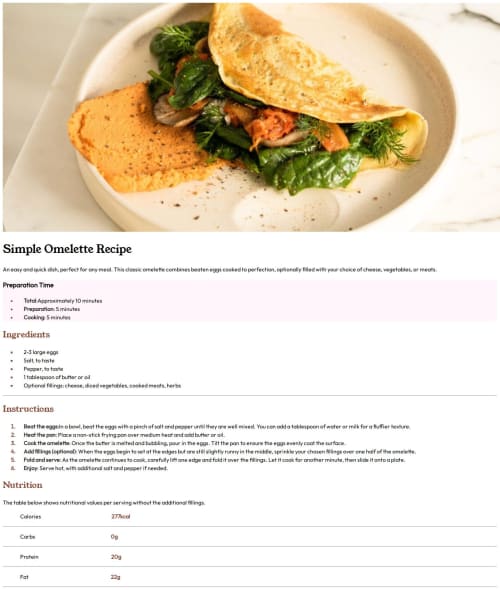Visual Studio Code,Google Fonts, HTML semantic tags

Solution retrospective
I'm proud of successfully creating a recipe webpage; it was my first project after learning the basics of HTML and CSS. It gave me confidence in my ability to apply what I've been learning.
If I could do it differently next time, I would focus on improving the design by learning and incorporating more advanced CSS techniques to make the page more visually appealing and user-friendly. Additionally, I would take the time to optimize the webpage for various devices, ensuring it is responsive and looks good on both mobile and desktop screens.
What challenges did you encounter, and how did you overcome them?For the recipe webpage project, one of the challenges I encountered was changing the color of the bullet points and adding specific spacing in the layout.
Changing the color of the bullets:
Initially, I was not able to change the color of the bullet points. After some research, I learned that I needed to use the list-style-color property in CSS to modify the color of the bullet points. Once I applied this property to the appropriate list elements, I was able to change the bullet color to match the overall design of the webpage.
Adding specific spacing:
Another challenge I faced was adding spaces at specific positions on the page. I wanted to create a visually appealing layout, but struggled to achieve the desired spacing between elements. To overcome this, I turned to Google and searched for CSS techniques to control spacing, such as using the margin and padding properties. By experimenting with different values and placements, I was able to fine-tune the spacing and create a more polished layout for the recipe webpage.
Overcoming these challenges was a valuable learning experience. It taught me the importance of researching solutions, experimenting with different approaches, and not being afraid to try new things. These skills will be invaluable as I continue to develop my web design and development abilities.
What specific areas of your project would you like help with?Okay, given the context of your recipe webpage project, here are the specific areas where I would like help:
HTML Tags and Attributes:
As a beginner, I'm still learning about the various HTML tags and their attributes. I'd love to explore more useful tags beyond the basic ones I've used, such as , , and . For example, I've heard about tags like , , , and `` that could help structure my webpage better. I'd appreciate guidance on when and how to use these more semantic HTML elements.
CSS Basics: While I was able to overcome some initial challenges with CSS, I feel there's still a lot for me to learn about the fundamentals of CSS. I'd like to dive deeper into topics like:
- Selectors: Understanding how to target specific elements more precisely using class, ID, and attribute selectors.
- Box Model: Gaining a better grasp of the box model and how to use
margin,padding, andbordereffectively. - Layout Techniques: Exploring different layout approaches, such as using
displayproperties, flexbox, or grid, to create more complex and responsive designs. - Styling Text: Learning how to apply styles like font families, sizes, weights, and colors to enhance the typography on my webpage.
By focusing on these areas, I believe I can improve the overall structure, design, and functionality of my recipe webpage. Any guidance or resources you can provide would be greatly appreciated as I continue to develop my HTML and CSS skills.
Please log in to post a comment
Log in with GitHubCommunity feedback
No feedback yet. Be the first to give feedback on shristirwt's solution.
Join our Discord community
Join thousands of Frontend Mentor community members taking the challenges, sharing resources, helping each other, and chatting about all things front-end!
Join our Discord